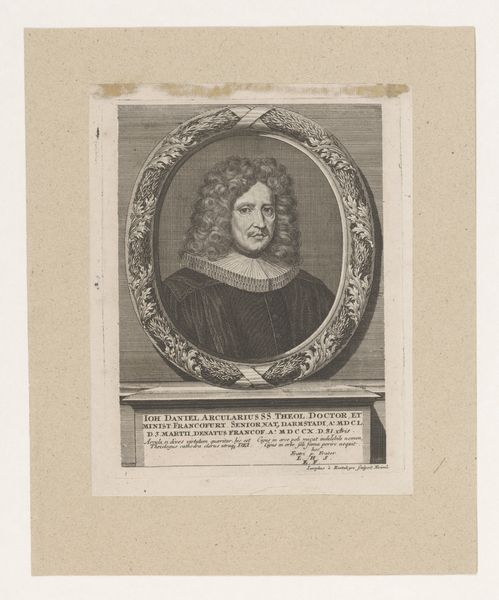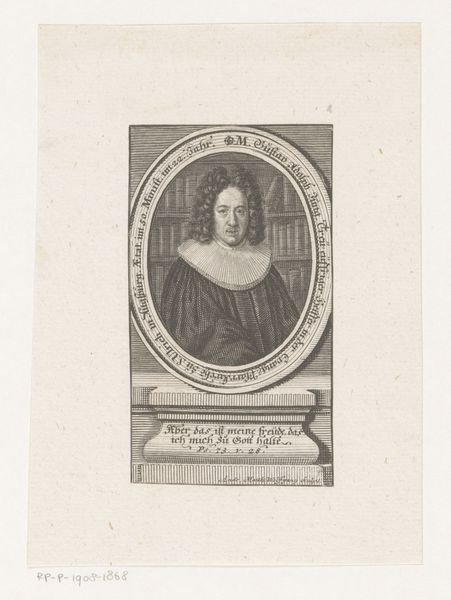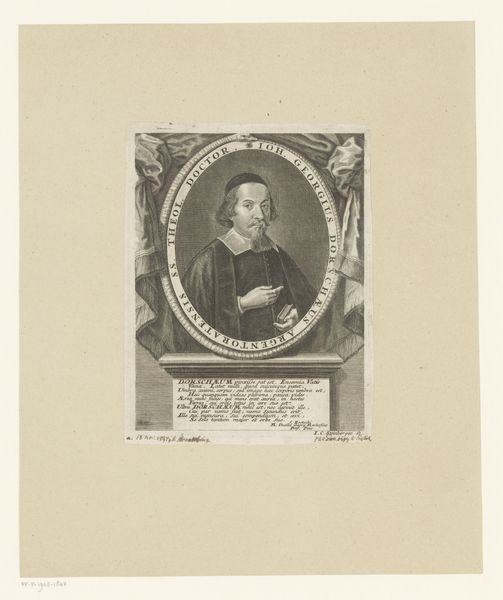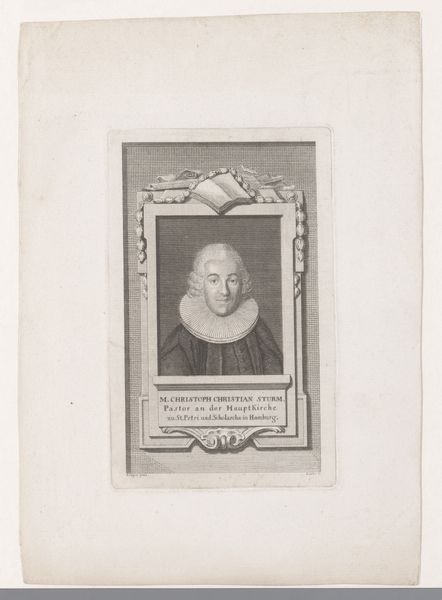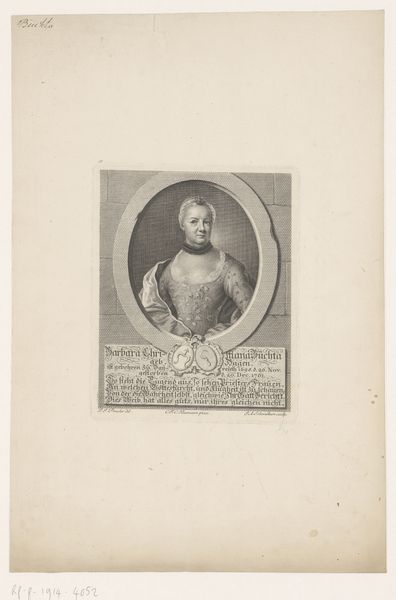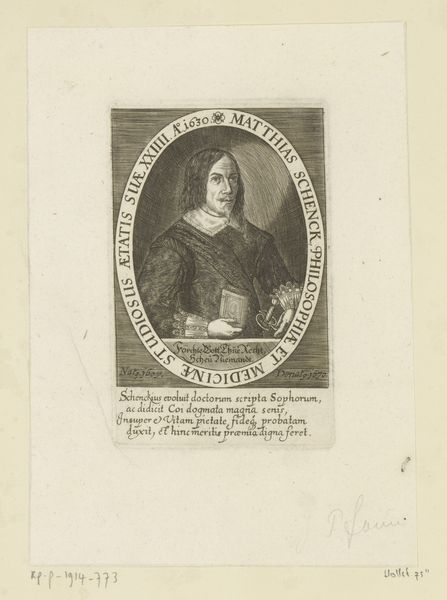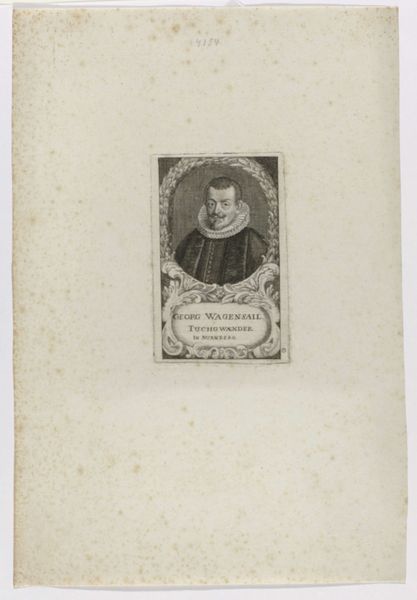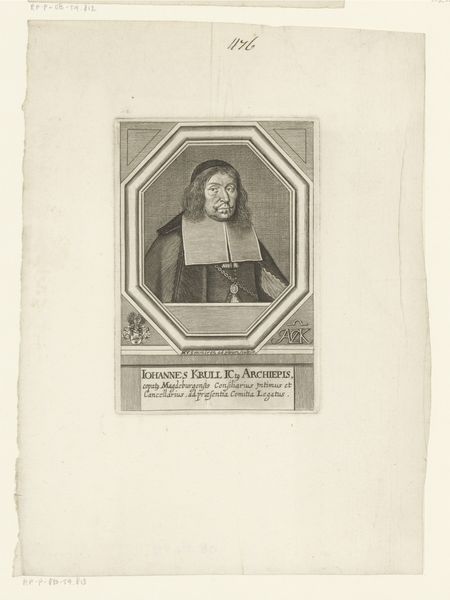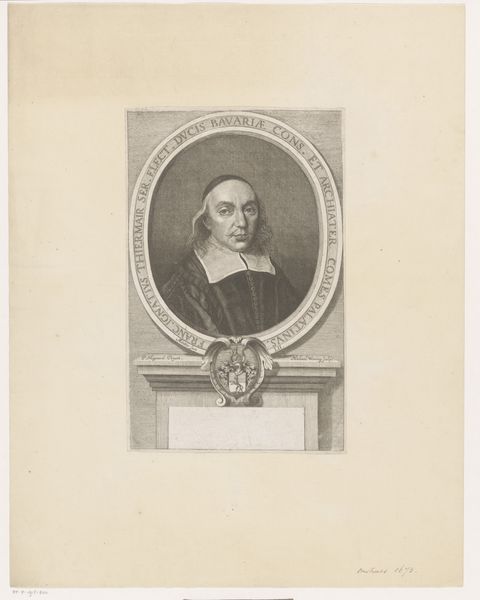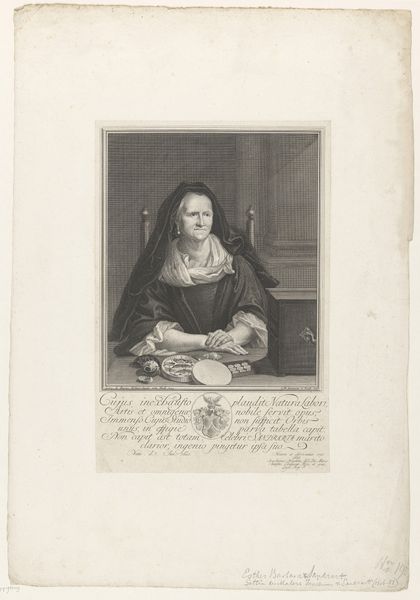
print, paper, ink, engraving
#
portrait
#
baroque
# print
#
paper
#
ink
#
engraving
Dimensions: height 189 mm, width 149 mm
Copyright: Rijks Museum: Open Domain
Curator: This print immediately strikes me with its almost austere appearance. The lines are fine, yet create a portrait with presence. Editor: This is "Portret van Gottlob Friedrich Seligmann," an engraving crafted in 1693 by Johann Christoph Boecklin. Seligmann was a professor and pastor in Leipzig, as noted in the text beneath the image. Curator: Ah, Leipzig. Knowing its origins adds context. I'm particularly interested in how Boecklin used engraving—the tools, the precision. To translate flesh, fabric, and the very *idea* of Seligmann into lines etched into a metal plate… it speaks to a highly developed artisanal practice, especially the textural and linear strategies for the lace ruff. How many impressions were made, and what would the workshop have looked like? Editor: Those are vital considerations. Prints like this were often commissioned, playing a crucial role in shaping public image and solidifying social standing. Who was the target audience and what message were they meant to internalize? Seligmann's role in both academia and the church likely added weight to such a portrait, didn't it? Curator: Absolutely. Think of the cost and resources required for paper, ink, the engraver's time and skill… this wasn’t disposable imagery. How were these prints displayed and disseminated? Were they for family collections or disseminated among Seligmann’s circle as markers of distinction? Editor: I would imagine a circulation through academic and clerical circles, even bound into books. The power of dissemination shaped by theological and political climates should be mentioned. Prints like this helped to construct reputations and networks in early modern Europe. It's also worthwhile considering its later collection, display, and preservation in the Rijksmuseum as symbolic representation for this subject. Curator: Indeed, these sorts of prints function on many different material levels simultaneously, don't they? Editor: They really do. I've come away thinking more about the cultural meaning generated by making likenesses accessible. Curator: And I about how much effort was required to create what now seems a small image on a sheet of paper. Fascinating.
Comments
No comments
Be the first to comment and join the conversation on the ultimate creative platform.
